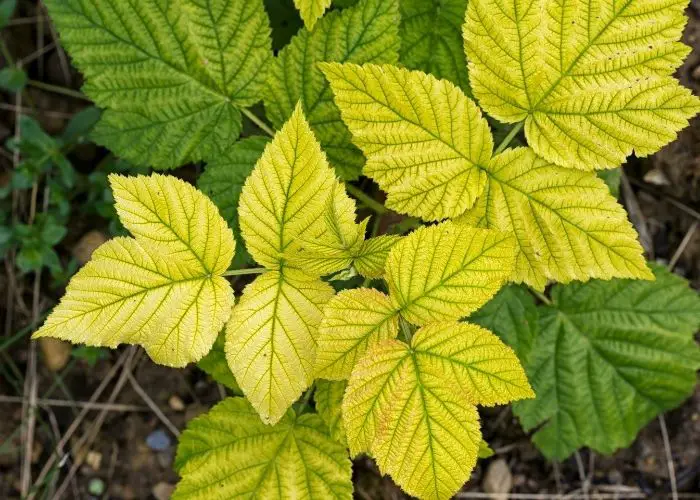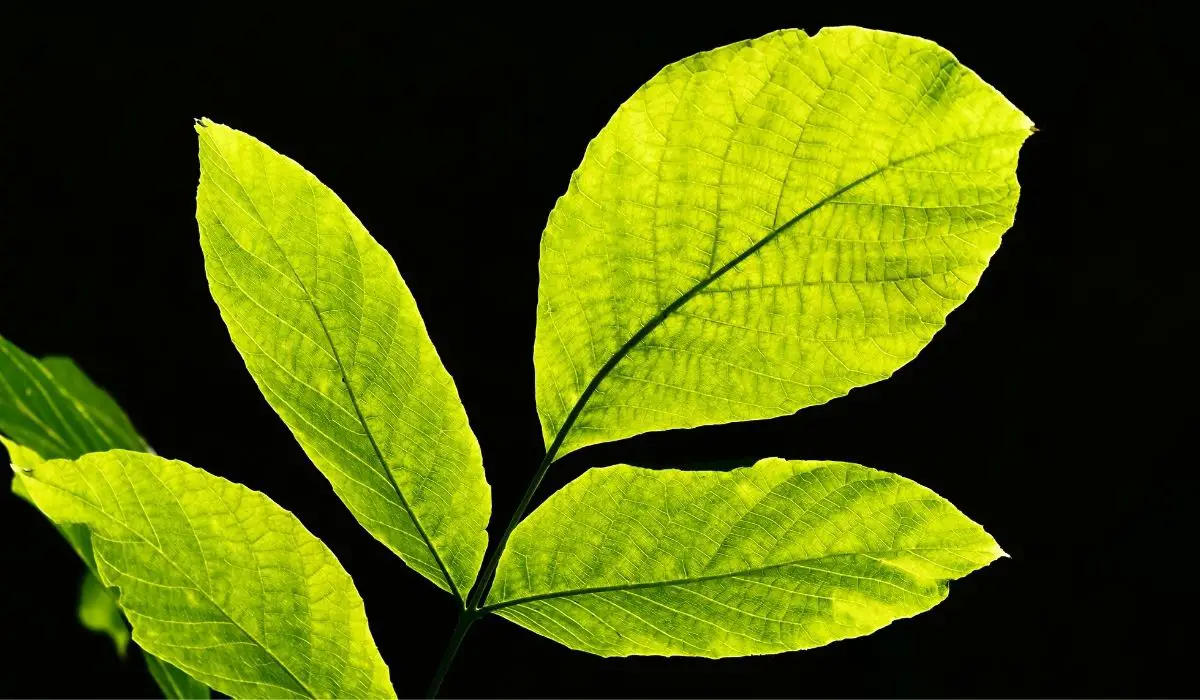Last Updated on June 21, 2023 by Tony Manhart
Are your plant leaves turning light green all of a sudden, even though you didn’t change anything significant concerning their care? Plants are predictable; as long as you feed them occasionally, water them often and provide sunlight daily, they’ll thrive. But sometimes the inevitable happens; you have to move or relocate the plant to a new room. The stress that comes with this action shows up on the foliage.
If you notice the plant leaves turning light green, it’s mostly nothing serious. But on one occasion, the underlying can be more severe, like chlorosis. Let’s dig into all the causes of your plant’s pale leaves.
What’s The Light Green Leaf On Your Plant
First, it’s essential to understand what gives the leaves their deep green color. Chlorophyll is a pigment that colors the plant and aids in the photosynthesis process. Thanks to chlorophyll, the plant can soak energy from the light and use it to survive.
When there’s an insufficient amount of chlorophyll, you’ll see the plant leaves turning light green. Some might even turn yellow if you don’t act immediately. So what causes the change in chlorophyll?
In new leaves, the light green color is standard; as they grow, they gain a deeper green shade. Older leaves that aren’t supposed to be light might suffer from an improper position, food, light, or even a disease.
Causes For Light Green Leaves
Have you spotted your plant leaves turning light green? Don’t neglect it! Start by checking if any of the following causes apply to them.
Insufficient Sunlight
Sunlight is the trickiest part when it comes to proper plant care. Too much sunlight can turn your leaves pale green and even yellow. It dehydrates the leaves, disrupting the photosynthesis process. As a result, they starve and start to die out.
Sudden change in the amount of light also changes the leaves’ color. Switching a plant from dappled shade to bright sunlight without any preparation is a guaranteed way to burn and fade the leaves. Lack of light also deprives the leaves and turns them pale green.
Most plants benefit from bright but indirect sunlight.
Thirsty Plant
Missing a few waterings leads to plant leaves turning light green. Water is essential for the leaves to stay hydrated and perky. Unless you’re dealing with succulents, watering once to twice a week is ideal.
Nutrient Deficiency
When people lack iron, they tend to turn pale. But did you know that the same thing applies to plant leaves?
When a plant lacks iron, the veins on the leaves stay deep green, but the leaf turns lime green, almost yellowish. Boron deficiency also causes the new leaves to grow light green. Regular fertilization with the correct fertilizer for your plant will prevent this from happening.

Position And Temperature Change
Plants can suffer from moving stress, which shows up on their foliage. Temperature shocks like a freeze result in paler leaves on your outdoor plants. Low temperatures slow down photosynthesis. But everything goes back to normal once the temperature stabilizes.
You can also notice plant leaves turning light green during hot summer waves. This is because high temperatures lead the plant to use up the food faster than it is produced.
Leaf’s Age
Older established foliage rarely turns light green. Their chlorophyll levels are stable, unlike with the new growth.
However, as the leaves age, they eventually have to fall off. The process starts with the leaves turning pale green, yellow, and brown. This is a natural process; the plant conserves energy by not supplying food to older foliage that’s no longer needed.
Chlorosis
Chlorosis is a state in which plants lack the main photosynthesis element – chlorophyll. Chlorosis often happens when a new fast-growing plant is planted in nutritiously poor soil. The plant consumes all the minerals from the ground before it’s fully established, so all the new growth is light green.
Low iron levels are the leading cause of chlorosis. Therefore, the best solution is to add a soil additive rich in chelated iron.
When To Worry About A Plant Light Green Leaves
Plant leaves turning light green is not as alarming. It’s usually due to basic reasons that you can easily fix. But it’s good to inspect the stems of the plant. If the whole plant starts losing its bright green color, it’s a severe situation.
A major lack of nutrients and low light can turn your whole plant light green. No fertilizer or too much fertilizer can also cause this. Ensure that your plant is getting adequate sunlight, water, and temperature. Then follow up with regular fertilization. Always check for bugs and pests. Check your roots, or even better, repot your plant in new rich soil.
How To Fix Plants Light Green Leaves
Don’t go removing your plant leaves turning light green! Restoring their deep green color is easy; they only require a little boost.
Use a tensiometer to check the soil’s moisture levels, or do a finger test. If the top inch or two are completely dry, your plant suffers from underwatering. If the soil is soggy, slow down the watering.
Indoor plants often suffer from low light. First, measure how many hours of sunlight your plant is getting. If it’s anything below 6 hours, consider artificial light or relocating the pot.
When picking fertilizers, consider what kind of soil you’re working with and what’s been planted before. You might be using the wrong fertilizer if you still find your plant leaves turning light green. Iron, for example, is an ingredient that’s difficult to absorb, so look for liquid fertilizers formulated with chelated iron.
If you are curious about how to fix the first set of true leaves from turning yellow, check out the following video:
Bottom Line: Plant Leaves Turning Light Green
It’s not impossible to find your plant leaves turning light green even though you’re providing the best care. Chlorophyll is the pigment that gives the leaves their healthy green color. It’s directly involved in the photosynthesis process, which provides energy for the plant.
When the plant consumes more than the delivered energy, the chlorophyll levels drop, and the leaves are no longer deep green.
Lack of iron can cause chlorosis, a form of plant anemia that causes pale leaves. If you tend to fertilize but find plant leaves turning light green, look for another iron-rich fertilizer.
Mary is a passionate gardener who loves spending her days getting her hands dirty and nurturing her plants. She‘s an avid reader of gardening magazines and is always looking for new ways to make her garden thrive. When not outside tending to her plants, Mary can be found inside reading up on the latest gardening trends, comparing notes with fellow gardeners, and finding the perfect pottery planter for her next planting project.



